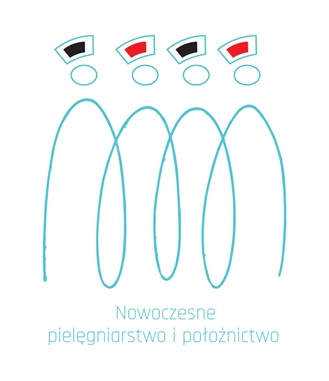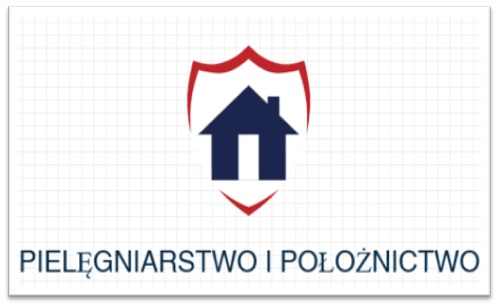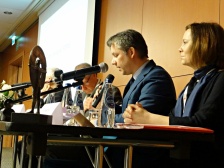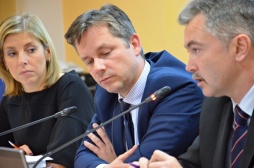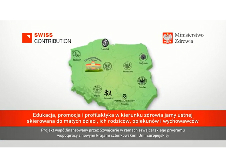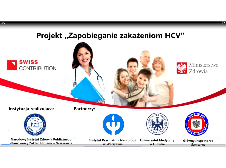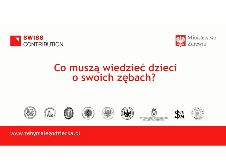APPLICANTS
1. What entities may apply for grants under the PL13 Programme "Reducing social inequalities in health"?
- Ministry of Health (Department of Healthcare Insurance) - pre-defined project,
- Selected poviats - under a restricted call. Poviats authorised to submit proposals are indicated in Annex 3 to the notice of the call for proposals.
2. Who may carry out a project?
The restricted call for proposals is only open to the poviats indicated in Annex 3 to the notice of the call for proposals. A project contract may be, hence, concluded with the Minister of Health by a poviat that can independently carry out all activities envisaged by a project. However, the following circumstances are also possible:
(a) all or a part of project activities may be outsourced to a different body of local administration.
Such outsourcing may only concern a different poviat that is a partner in the project or a municipality situated on the territory of the poviat. In such a case, an agreement has to be signed.
An agreement with a partner poviat under a project, apart from complying with the requirements specified in point 4.6.3 of the Manual has to be rooted in the Act of 5 June 1998 on poviat local government.
An agreement with a municipality also has to be subject to the Act of 5 June 1998 on poviat local government.
In such a case, the entity entrusted with the implementation of activities by the Project Promoter actually carries out all the activities, yet the poviat with whom the Minister of Health signed a project contract remains the party cooperating with the Programme Operator and fulfilling all reporting obligations of the Project Promoter.
(b) a part of activities consisting in medical services may be outsourced to entities for which the poviat is a founding institution as defined by the Act of 15 April 2011 on medical activity.
Such outsourcing must be based on an agreement between a poviat and a health care institution for whom the poviat is a founding institution as defined by the Act of 15 April 2011 on medical activity. Other activities are carried out by the poviat, which is the party that collaborates with the Programme Operator and fulfills all reporting obligations. The poviat with which the Minister of Health concluded a project contract remains also the Project Promoter.
(c) activities may be outsourced to other entities.
The poviat may outsource project activities to other entities. Such outsourcing must be subject to the Act of 29 January 2004 - Public Procurement Law or, if the said act is not applicable, the Guidelines of the Minister of Regional Development concerning the awarding of contracts under the EEA Financial Mechanism 2009-2014, and the Norwegian Financial Mechanism 2009-2014 that are not subject to the Act of 29 January 2004 - Public Procurement Law.
Due to numerous questions of the applicants to PL13 concerning the scope of works outsourced to different categories of entities indicated in point 8 of the Applicant's Manual, we would like to inform that:
(a) other body of local administration that is a project partner or a municipality situated on the territory of a poviat - Project Promoter may carry out all project activities, including those related with health promotion/disease prevention programmes, information and publicity and project management;
(b) an entity for which the poviat - Project Promoter is a founding institution as defined by the Act of 15 April 2011 on medical activity may only carry out activities consisting in medical services;
(c) entities selected to carry out activities subject to the Act of 29 January 2004 - Public Procurement Law or Guidelines of the Minister of Regional Development concerning the awarding of contracts under the EEA Financial Mechanism 2009-2014, and the Norwegian Financial Mechanism 2009-2014 that are not subject to the Act of 29 January 2004 - Public Procurement Law may carry out single activities under the project, e.g. consisting in medical services or information and publicity campaigns. However, it is not possible to outsource all project activities to entities other than mentioned in point (a).
In all of the aforementioned cases, the poviat with which the Minister of Health signed a project contract remains the party cooperating with the Programme Operator and responsible for project implementation and all reporting obligations.
3. May parts of various scenarios described in point 2 be applied in conjunction when project activities are outsourced to other entities?
Yes, the poviat may apply all available outsourcing scenarios.
4. Does a project implemented by partner poviats, one of which is the applicant, have to concern the poviat of the applicant, or may it concern the territory of both poviats?
A project implemented by partner poviats may be carried out on the territory of the applicant's poviat as well as the partner's poviat. If a project is to be implemented with a different eligible poviat, the health promotion and/or disease prevention programme has to relate to one identified problem area and has to be shared by both poviats. Partners do not have to be authorised to take part in the call under the same SMR, yet the analysis of health needs carried out at the 1st stage of the Health needs assessment model, which may be carried out for both poviats together and for each of them separately, has to lead to the identification and selection of the same problem area and the same target group in both poviats.
5. Is there a catalogue of activities that may be outsourced to other entities subject to the Public Procurement Law?
No, the applicant may outsource any activity to a different entity. However, it needs to be remembered that it is the poviat that is a party to the contract with the Programme Operator, and the applicant takes full responsibility for correct and timely project implementation and settlement.
6. May project activities be outsourced to a non-governmental organisation?
Yes, but such outsourcing is only possible subject to the Act of 29 January 2004 Public Procurement Law or the Guidelines of the Minister of Regional Development concerning the awarding of contracts under the EEA Financial Mechanism 2009-2014, and the Norwegian Financial Mechanism 2009-2014 that are not subject to the Act of 29 January 2004 - Public Procurement Law.
ELIGIBLE MEASURES UNDER PL13
1. Which measures are eligible?
Measures eligible under the programme concern the implementation of comprehensive health promotion and/or disease prevention programmes for local communities.
Pilot projects have to be prepared in accordance with the health needs assessment model developed within the framework of the pre-defined project (Annex 1 to the notice) and health promotion and/or disease prevention model (Annex 2 to the notice).
RULES OF PARTICIPATION IN THE CALL FOR PROPOSALS / PROGRAMME GUIDELINES
1. How many applications concerning various projects may be submitted by an applicant under the call?
Each of the entities indicated in Annex 3 to the notice may submit only one application. However, each eligible entity may be a partner in unlimited number of proposals.
2. Is it possible to submit an application concerning a project that is already being implemented?
It needs to be noticed that a project has to be based on the health needs assessment model and the model of a health promotion and/or disease prevention programme presented in the notice. Therefore, it is impossible to submit an application concerning a project that is already in progress.
3. What are the deadlines of expenditure eligibility under the Programme?
In the case of projects submitted for the call for proposals, the eligibility period will be specified in the project contract concluded between the applicant and the Programme Operator. The final project eligibility date may not exceed 30 April 2016.
4. Do prevention programmes implemented by a poviat under PL13 have to obtain approval from the Agency for Health Technology Assessment in Poland required by the Act of 27 August 2004 on publicly funded health care services?
No, at the stage of submitting applications, applicants provide only annexes presented in the Application form user guide.
Since they are pilot projects based on models developed under the PL13 Programme, it is also not required to obtain the approval of the Agency for Health Technology Assessment at the stage of implementation.
5. What should the role of the partner poviat be?
The Programme Operator does not indicate the scope of activities of the project partner.
6. Is it possible to have a partner from countries other than the Donor States, and are the costs of such a partnership eligible? Are there any restrictions concerning partner's legal capacity?
Projects under the present call may be implemented in partnerships with entities from Poland and Norway.
Eligible project partners from Norway include municipalities/county authorities as well as NGOs, research and educational institutions (universities and colleges) operating in the field of health care.
Partners from Poland may only include other poviats indicated in Annex 3 to the notice.
Partner's expenditure will only be considered eligible if a partnership agreement is signed between the applicant and the partner, prepared in accordance with the guidelines of the Programme Operator.
7. Are projects implemented in partnership rewarded with extra points?
No, there are no extra points for partnerships.
However, a partnership may contribute to improving project quality by increasing its substantive value and facilitating its implementation owing to the partner's experience and know-how.
8. What is the level of co-financing for a project?
The grant rate (co-financing level) for all Project Promoters is equal to 100% of the total eligible project costs. The grant will be paid in PLN.
9. What are the minimum and maximum values of a project?
The minimum value of total eligible project costs amounts to PLN 1,263,240, i.e. EUR 300,000.
The maximum value of total eligible project costs amounts to PLN 4,210,800, i.e. EUR 1,000,000.
10. May projects generate profit?
Projects that apply for Programme grants may not generate profit.
It is not possible to use project results for commercial purposes.
HEALTH NEEDS ASSESSMENT MODEL/ MODEL HEALTH PROMOTION AND/OR DISEASE PREVENTION PROGRAMME
1. How should I understand "external causes"?
The "external causes" category on the basis of which a poviat has been qualified to participate in the call for proposals in accordance with the International Statistical Classification of Diseases and Related Health Problems (ICD-10) includes the following factors: accidents, intended self-harm, assault, event of undetermined intent, legal intervention and operations of war, complications of medical and surgical care, sequelae of external causes of morbidity and mortality, supplementary factors related to the causes of morbidity and mortality classified elsewhere. If an applicant chooses the problem area related to "external causes" at the stage of health needs assessment (stage I), at the next stage of analysis (stage II) the applicant may focus on a more specific cause of mortality in a given category e.g. only on accidents.
2. How should a problem area be selected for the implementation of a health promotion and/or disease prevention programme?
Regardless of why a poviat is authorised to take part in the call for proposals, once it has been qualified to participate, the poviat has to analyse at stage I Health needs assessment model all standardised mortality ratios (SMR) provided by the National Institute of Public Health - National Institute of Hygiene (NIPH - NIH) in 2009-2011 in categories: total mortality, total malign neoplasms, diseases of the circulatory system, diseases of the respiratory system, diseases of the digestive system, external causes. The analysis has to lead to a selection of one priority area.
The poviat may also present own data on morbidity and mortality (statistically reliable). On the basis of SMR analysis and taking other available data into consideration (in particular those recommended by the Ministry of Health: hospital morbidity, causes of ruling incapacity to work/professional deactivation), the poviat selects one priority area, e.g. diseases of the circulatory system.
The SMR on the basis of which the poviat has been qualified to participate in the call for proposals should be regarded as a priority, yet the data analysis may lead to selecting a priority area under a different category than the one on the basis of which the given poviat has been qualified to participate in the call (from among: total malign neoplasms, diseases of the circulatory system, diseases of the respiratory system, diseases of the digestive system, external causes).
In accordance with the health needs assessment model if a given poviat already carries out or intends to carry out measures in the priority area specified on the basis on the SMR analysis, financed with own means or from other external sources, it is possible to select a different area than the first one resulting from the SMR analysis (e.g. on the basis of the SMR analysis, a poviat is authorised to take part in the call for proposals due to high mortality attributable to the diseases of the respiratory system, yet the poviat already implements other programmes/projects/measures/interventions or holds current data indicating that the health situation in the said area improves or deteriorates in a different area).
Additionally, the poviat presents a social and economic analysis of its population, taking into consideration factors that influence or may possibly influence the state of health of its inhabitants, in particular: demographic factors, income, employment rate, poverty, living conditions, industry structure, the structure of other economy branches (agriculture, tourism).
If a given poviat is authorised to take part in the call for proposals due to its standardised mortality ratio (SMR) in 2009-2011 in at least two of the following categories: total malign neoplasms, diseases of the circulatory system, diseases of the respiratory system, diseases of the digestive system, external causes, at the first stage of health needs assessment data should be analysed in a way to select a single priority area (out of: total malign neoplasms, diseases of the circulatory system, diseases of the respiratory system, diseases of the digestive system, external causes).
If a given poviat is authorised to take part in the call for proposals due to its total mortality ratio and one or more of the following SMR categories: total malign neoplasms, diseases of the circulatory system, diseases of the respiratory system, diseases of the digestive system, external causes, at the first stage of health needs assessment data should be analysed to select a single priority area (out of: total malign neoplasms, diseases of the circulatory system, diseases of the respiratory system, diseases of the digestive system, external causes).
If a given poviat is authorised to take part in the call for proposals only due to its total mortality ratio, the poviat should analyse health needs on the basis of data submitted by the NIPH - NIH and taking other available data into consideration in order to choose a single priority area. The data analysis has to lead to selecting a priority area from among: total malign neoplasms, diseases of the circulatory system, diseases of the respiratory system, diseases of the digestive system, external causes.
If a project is to be implemented with a different eligible poviat, the health promotion and/or disease prevention programme has to relate to a single identified problem area. Partners do not have to be authorised to take part in the call under the same SMR, yet the analysis of health needs carried out at the first stage: Health needs assessment model, has to lead to the identification and selection of the same problem area and the same target group in both poviats.
To conclude:
1. The analysis of SMR provided by the NIPH - NIH in the category: total mortality, total malign neoplasms, diseases of the circulatory system, diseases of the respiratory system, diseases of the digestive system, external causes is obligatory in each case, regardless of why a given poviat has been qualified to take part in the call for proposals. It is the basic accessibility criterion at the stage of content-related appraisal;
2. A poviat may use additional data, e.g. hospital morbidity, causes of ruling incapacity to work/professional deactivation, number of deaths, additional data provided by the NIPH - NIH in order to show that a health promotion and/or disease prevention programme should be implemented under a different area (from among total malign neoplasms, diseases of the circulatory system, diseases of the respiratory system, diseases of the digestive system, external causes) than the one indicated by the SMR analysis carried out by the NIPH - NIH in order to qualify a poviat to participate in the call for proposals;
3. At the stage of content-related appraisal, a health care expert will evaluate whether the health needs assessment included in the application has been conducted according to the health needs assessment model.
On 16 April this year, the National Institute of Public Health - National Institute of Hygiene published detailed epidemiological data from 2009-2011, in order to help poviats prepare their applications. The information is available on the following sites:
1. http://atlas.pzh.gov.pl/K0911/lista_map_K0911.html
2. http://atlas.pzh.gov.pl/M0911/lista_map_M0911.html
3. http://atlas.pzh.gov.pl/ALL0911/lista_map_ALL0911.html
APPLICATION APPRAISAL
1. Are extra points awarded for the indication of more than one output indicator?
No, in the Application form user guide, the Programme Operator requires providing at least one outcome indicator. Next, at least one output must be identified for an outcome at the project level. For the selected outcome(s) and output(s) an indicator has to be selected and a source of their verification, base value and target value of the indicators have to be identified.
2. Is a partner also authorised to lodge an appeal in the appeal procedure in the case of partnership projects?
No, an appeal may only be lodged by the applicant who represents the partner in relations with the Programme Operator.
3. Is it possible to appeal against the decision on the evaluation of the application?
Applicants may appeal against the results of formal review and content-related appraisal. In both cases, the appeal follows a two-tier procedure. First, the Applicant lodges an appeal to the Programme Operator. In the case of rejection of the appeal by the Programme Operator, the Applicant may lodge an appeal to the National Focal Point. The NFP may uphold the decision of the Programme Operator or refer the application for re-evaluation. The NFP's decision is final and may not be appealed against.
It is impossible to appeal against the decision of the Selection Committee, which approves the ranked list of projects after the end of the content-related appraisal and pursuant to Article 6.5. of the Regulation on the implementation of the Norwegian Financial Mechanism, may modify it in justified cases.
APPLICATION DOCUMENTS/LIST OF ANNEXES
1. In what language should the application for PL13 be submitted?
In general, the application shall be made in Polish, but some of its elements should be prepared in English, i.e.
- project summary in part 4.2 of the application form (Project summary description) and
- documents concerning the Norwegian partner (statement on VAT eligibility of the Norwegian partner, statement on the eligibility of the Norwegian partner, letter of intent/partnership agreement concluded with the Norwegian partner should be prepared in two counterparts in Polish and in English).
2. Is a power of attorney for the person signing the application required in each case?
If the person signing the application is a person statutorily authorised to represent the applicant, then a power of attorney is not required. Otherwise a power of attorney is required. Detailed information in this regard is provided in point 14 Statement and signature in the Application form user guide.
3. What annexes shall be attached to the programme application?
The application should include all annexes required by the Application form user guide.
PROJECT PAYMENTS
1. May the project generate revenues during its implementation and sustainability period?
According to the Applicant's Manual, projects under the Programme shall not generate income. Services planned under the projects shall be provided without discriminatory practices towards final beneficiaries and be free of charge (point 7.7. of the Manual).
This requirement means that the Project Promoter may not obtain financial gains as result of the project (e.g. charge the final beneficiaries). Eligible project expenditure shall be understood as actual costs borne by the Project Promoter that are not financed with other means or other funds (avoiding double funding), i.e. the Project Promoter may not settle a given expenditure (e.g the cost of medical examinations) under a project and a contract with the National Health Fund (NFZ) simultaneously. The costs of examinations envisaged in the project budget shall be settled under the project.
FINANCES/REIMBURSEMENTS/PRINCIPLES OF PROJECT IMPLEMENTATION
1. Is it necessary to prepare a separate budget of costs borne by the Applicant and by the Partner?
Partner costs have to be recognised as an item of specific project budget attached to the application. Additionally, provisions concerning financial arrangements between the applicant and the partner, including the provisions on which partner's expenditure may be reimbursed from the project budget, have to be included in the partnership agreement. The Project Promoter settles all costs of the project, both own costs and the costs borne by the partner, recognising the amounts of expenditure in a given period in the payment claim.
2. Do management costs of people involved in project implementation have to be reimbursed on the basis of an employment contract, or may they be reimbursed on the basis of a contract of mandate?
Under the projects, people may be engaged to manage the project (management costs) under an employment contract and under civil-law agreements. However, it needs to be remembered that only reimbursements concerning activities directly related to the project are eligible.
3. Should a timesheet be applied to calculate the time of work of an employee with an employment contract (full-time employee) who is temporarily delegated to implement the project?
If employees are delegated full time, it is enough to change their scope of responsibilities. If an employee is delegated only part time, a timesheet is required. It is also required to document presence at work e.g. with a monthly attendance list.
4. Is VAT eligible cost?
VAT is eligible only if legal regulations prevent Project Promoter from recovering it - otherwise it is not eligible. The applicant shall submit a statement on VAT eligibility attached to the application.
5. Is equipment hire eligible expenditure?
Yes, equipment hire for project purposes is eligible.
6. Is the purchase of equipment for less than PLN 3,500 (e.g. a pressure gauge, a slide projector for publicity measures) eligible?
The purchase of equipment of unit value below PLN 3,500 is considered eligible. Investment expenditure concerning equipment over PLN 3,500 shall not be eligible.
7. Should the amounts provided in the application budget be given net or gross?
In the application budget, costs shall be given gross, as long as the cost of VAT is eligible for financing under the Programme. If VAT is not eligible because the Project Promoter may recover it, the application should include net amounts and a comment on non-eligibility of VAT and the amount of expenditure. The method of filling the annex Detailed project budget is illustrated in the example attached to the document template (Example sheet)
8. Is it required to have a separate bank account for the purposes of the project?
Yes, the Project Promoter is obliged to open a separate bank account for the purposes of the project, whose number shall be provided in the project contract.
9. Is it possible to provide the partner with interim payments? Should possible collected interest also be transferred to the Operator's bank account?
The Operator transfers the NFM grant funds to the account of the Project Promoter provided in the project contract. The settlements between the Project Promoter and the partner have to be regulated in the partnership agreement.
However, it needs to be remembered that under the Programme, only actually incurred expenditures are reimbursed. Therefore, advance payments may only be settled when the final payment for a service or delivery is settled. Interest on FM grants should be returned to the account specified by the Operator.
10. How should indirect costs be settled under the Programme?
Indirect costs are all eligible costs that cannot be clearly identified by the Project Promoter and/or the project partner as being directly attributed to the project but which can be identified and justified by its accounting system as being incurred in direct relationship with the eligible direct costs attributed to the project. They may not include any eligible direct costs. They may be identified according to one of the following methods:
(a) in accordance with Article 7.4.1 (a) of the Regulation - expenditures are identified and reimbursed on the basis of actual indirect costs for those Project Promoters and project partners that have an analytical accounting system to identify their indirect costs as indicated above,
(b) in accordance with Article 7.4.1 (b) of the Regulation - as a flat rate of up to 20% of total direct eligible costs excluding direct eligible costs for subcontracting and the costs of resources made available by third parties which are not used on the territory of the state of the Project Promoter - reimbursement of expenditures is based on a report made by an independent certified auditor confirming that the flat rate overheads represent a fair apportionment of the overall overheads.
The method of calculating indirect costs and their maximum amount are specified in the project contract.
The method of calculating indirect costs of the project partner is specified in the partnership agreement between the Project Promoter and the project partner.
11. What categories of expenditure are subject to limits?
Management - expenditures related to project management, including the establishment of a management structure together with staff engaged in project management/coordination during its implementation. They may encompass office expenditure, costs of coordination/reporting, possible translations required during project implementation, etc.
The management costs are limited to 10% of the total eligible expenditure (the limit should be taken into account when completing part VI of the form).
Detailed information concerning this category of expenditure may be found in the Applicant's Manual - Principles of application preparation and participation in the call for proposals for Operational Programme "Reducing social inequalities in health" available at www.zdrowie.gov.pl.
Reserve - In accordance with Article 6.7 paragraph 3 (k) of the Regulation, project budget may allow for up to 5% for contingency, which should be taken into account when completing part VI of the application form. Funds from this reserve may not increase the value of management costs above a set level (i.e. 10% of total eligible project expenditure). The reserve is not mandatory.
12. Are information and publicity expenditures limited?
Information and publicity is a cost category that relates to expenditure on information and publicity measures in connection with the project. It includes the costs of running a website, producing promotional materials (including their design and print), publication of announcements, organisation of conferences dedicated to the project, etc.
The expenditures on such measures are not limited.
13. What is the minimum threshold of spending the received advance payment sufficient to reimburse it?
The payments of subsequent interim payments are made subject to approved payment claims and depend on the settlement of at least 70% of the already received advance payment. This requirement may be cancelled by the PO in justified cases.
POPRZEDNIĄ
NASTĘPNĄ
NIEŚCISŁOŚĆ
Ministerstwo Zdrowia
Ilość fotografii: 7











